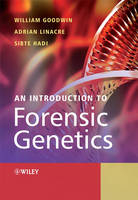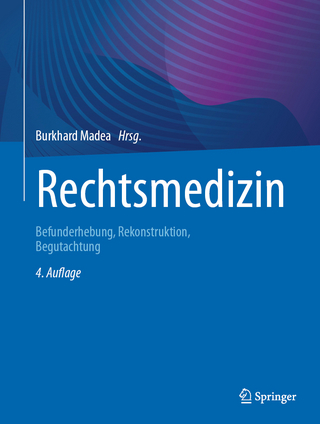
An Introduction to Forensic Genetics
Wiley-Blackwell (Verlag)
978-0-470-01026-6 (ISBN)
- Titel ist leider vergriffen;
keine Neuauflage - Artikel merken
An Introduction to Forensic Genetics is a comprehensive introduction to this fast moving area from the collection of evidence at the scene of a crime to the presentation of that evidence in a legal context. The last few years have seen significant advances in the subject and the development and application of genetics has revolutionised forensic science. This book begins with the key concepts needed to fully appreciate the subject and moves on to examine the latest developments in the field, illustrated throughout with references to relevant casework. In addition to the technology involved in generating a DNA profile, the underlying population biology and statistical interpretation are also covered. The evaluation and presentation of DNA evidence in court is discussed as well with guidance on the evaluation process and how court reports and statements should be presented.*
An accessible introduction to Forensic Genetics from the collection of evidence to the presentation of that evidence in a legal context* Includes case studies to enhance student understanding* Includes the latest developments in the field focusing on the technology used today and that which is likely to be used in the future* Accessible treatment of population biology and statistics associated with forensic evidence This book offers undergraduate students of Forensic Science an accessible approach to the subject that will have direct relevance to their courses. An Introduction to Forensic Genetics is also an invaluable resource for postgraduates and practising forensic scientists looking for a good introduction to the field.
Contents. Preface. 1 Introduction to forensic genetics. Forensic genetics. A brief history of forensic genetics. References. 2 DNA structure and the genome. DNA structure. Organization of DNA into chromosomes. The structure of the human genome. Genetic diversity of modern humans. The genome and forensic genetics. Tandem repeats. Single nucleotide polymorphisms. Further reading. References. 3 Biological material - collection, characterization and storage. Sources of biological evidence. Collection and handling of material at the crime scene. Identification and characterization of biological evidence. Evidence collection. Sexual and physical assault. Presumptive testing. Storage of biological material. References. 4 DNA extraction and quantification. DNA extraction. DNA extraction from challenging samples. Quantification of DNA. DNA IQTM system. References. 5-The polymerase chain reaction. The evolution of PCR-based profiling in forensic genetics. DNA replication - the basis of the PCR. The components of PCR. The PCR process. PCR inhibition. Sensitivity and contamination. The PCR laboratory. Further reading. References. 6 The analysis of short tandem repeats. Structure of STR loci. The development of STR multiplexes. Detection of STR polymorphisms. Interpretation of STR profiles. Further reading. References. 7-Assessment of STR profiles. Stutter peaks. Split peaks (+/- A). Pull-up. Template DNA. Overloaded profiles. Low copy number DNA. Peak balance. Mixtures. Degraded DNA. References. 8 Statistical interpretation of STR profiles. Population genetics. Deviation from the Hardy-Weinberg equilibrium. Statistical tests to determine deviation from the Hardy-Weinberg equilibrium. Estimating the frequencies of STR profiles. Corrections to allele frequency databases. Which population frequency database should be used? Conclusions. Further reading. References. 9 The evaluation and presentation of DNA evidence. Hierarchies of propositions. Likelihood ratios. Two fallacies. Comparison of three approaches. Further reading. References. 10 Databases of DNA profiles. The UK national DNA Database. International situation. Useful web sites. References. 11 Kinship testing. Paternity testing. Identification of human remains. Further reading. References. 12 Single nucleotide polymorphisms. SNPs - occurrence and structure. Detection of SNPs. SNP detection for forensic applications. Forensic applications of SNPs. SNPs compared to STR loci. Further reading. References. 13 Lineage markers. Mitochondria. Applications of mtDNA profiling. The Y chromosome. Forensic applications of Y chromosome polymorphisms. Further reading. Useful web sites. Appendix 1 Forensic parameters. Appendix 2 Useful web links. Glossary. Abbreviations. Index.
| Erscheint lt. Verlag | 1.10.2007 |
|---|---|
| Verlagsort | Hoboken |
| Sprache | englisch |
| Maße | 169 x 243 mm |
| Gewicht | 310 g |
| Einbandart | Paperback |
| Themenwelt | Studium ► 2. Studienabschnitt (Klinik) ► Rechtsmedizin |
| Naturwissenschaften ► Biologie ► Genetik / Molekularbiologie | |
| ISBN-10 | 0-470-01026-6 / 0470010266 |
| ISBN-13 | 978-0-470-01026-6 / 9780470010266 |
| Zustand | Neuware |
| Haben Sie eine Frage zum Produkt? |
aus dem Bereich


